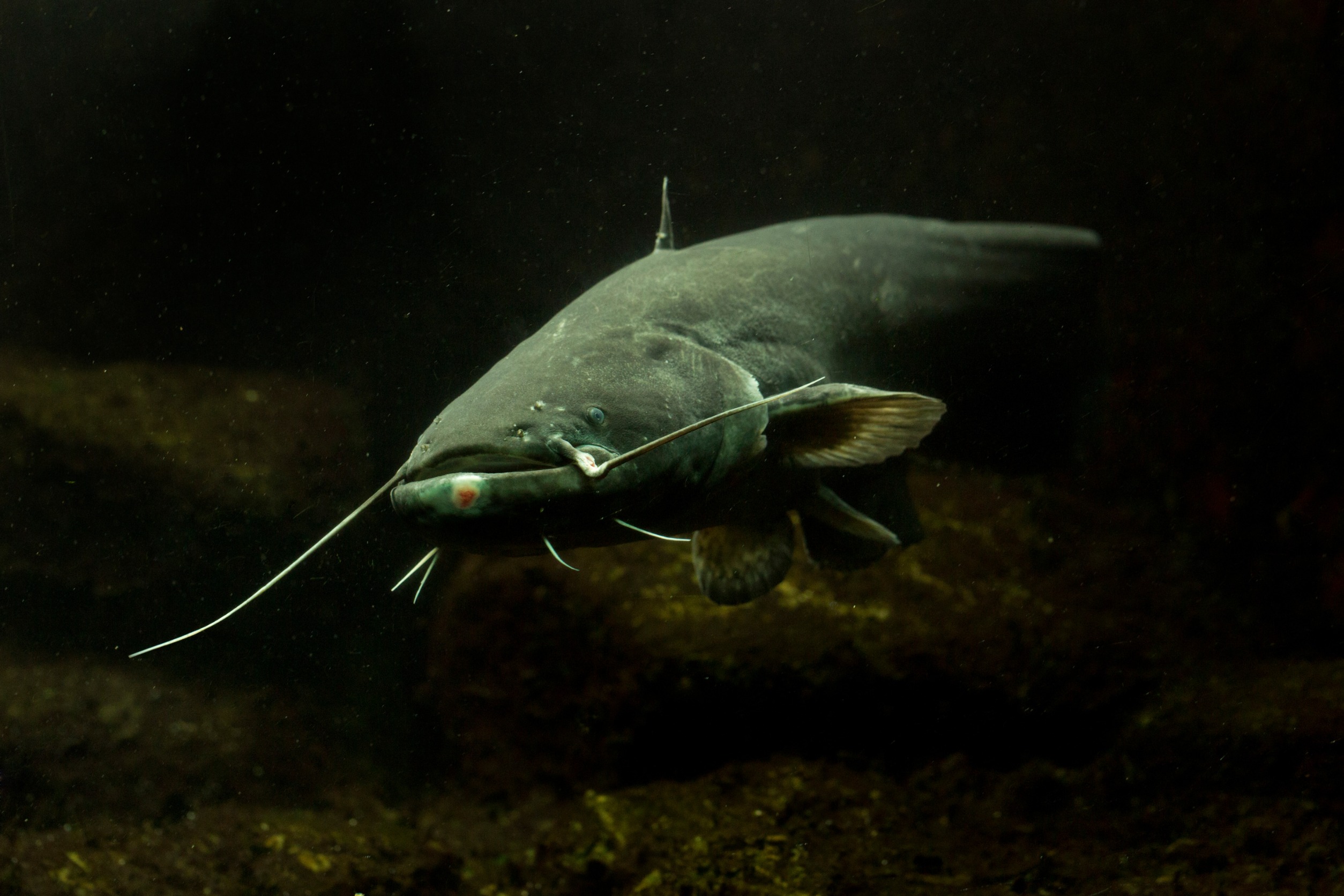The Wels catfish is one of the largest species of catfish. They are mainly native to broad southern, eastern, and central European areas. They are found in the Baltic, Black, and Caspian Seas. In Western Europe, it is known as a prized sport fish. It is also found in the United Kingdom, Kazakhstan, China, and Greece.
The Wels catfish is recognized as one of the largest freshwater fish in the world. The most known name, Wels, comes from old German. Also, another familiar name, known as the sheatfish, comes from old Europe. In the water, the Wels catfish is very sensitive to chemical signals. It also has the power to detect the movements of water from the prey nearby.

Classification and Scientific Name
The scientific name of the Wels Catfish comes from an ancient Greek word: Silurus glanis. The meaning of this scientific name is a large river fish. They are members of a genus that includes other species like the Amur catfish and Aristotle’s catfish, which are also significant.
Evolution
Despite being one of the largest catfish species and native to Europe and Asia, the Wels Catfish belongs to the genus Silurus and the family Siluridae. Since it is a member of the Siluriformes family, it has the same heavy, bony head, facial tendrils, and bearskin. The Wels catfish is one of the largest versions of other catfish species.
There are a few kinds of superorders the Wels catfish belongs to, like Characiformes, which consist of more than 2000 species. Cypriniformes, in this order, consist of more than 4500 species. And finally, Gymnotiformes, which has 250 species.
The most interesting thing about the earliest members of the superorder was that they lived 150–200 million years ago in the Jurassic. Today’s Wels catfish is the latest form of those ancestors. Evolution has turned them into their present form.
Appearance
The Wels catfish is known as powerful and one of the largest species of catfish in the world. Its mouth contains lines of several small and sharp teeth. It also has two long barbels on the upper jaw and four shorter ones on the lower portion. Also, it has a long anal fin and a small, sharp dorsal fin.
The most notable characteristic of the Wels catfish is its gigantic size. This heavy and massive water giant can reach up to 12 feet long. It weighs a record-breaking 500 pounds. After the beluga sturgeon in Europe, it is the biggest freshwater fish. The typical adult Wels catfish is more like 5 to 7 feet long and weighs 220 pounds.
Habitat
The wels catfish is primarily found in Asia and Europe’s freshwater rivers and big lakes. This fish was introduced as a sport fish in China and Europe. According to the International Union for Conservation of Nature (IUCN), they are considered species of most minor concern. Despite being so, in some areas, they are threatened by overfishing and chronic changes. Their low genetic diversity is also a significant concern in this problem.
Food
A full-grown Wels catfish consumes snails, worms, several kinds of aquatic insects, and various small fish. Sometimes, they can eat ducks, crayfish, frogs, sneaks, and rats as their regular meals. Their sharp teeth help them chew all forms of food, and their strong digestive system also allows them to digest those foods. On the other hand, young Welsh catfish mostly take plankton as their regular food.
Reproduction
The Wels catfish breeds during spring annually, and it takes 5–10 days for the eggs to hatch. The reproduction maturity for male fish is four years, and the maturity for female fish is three years. The female Wels catfish can lay up to 30,000 eggs per kilogram of their body weight.
After hatching, the fry will feed on plankton and grow quickly. In the first ten months to a year, they can easily reach up to 10 pounds. A Wels catfish’s record lifespan is 70–80 years, while an average fish’s lifespan is 20–30. Fishing and several kinds of diseases are the causes of their deaths and a lower lifespan if they are not eaten.
Fishing
Around the world, the Wels catfish is valued for several reasons. Some fishermen who have proper equipment catch them as sport fish. They put in a lot of effort to catch them. On the other hand, the Wels catfish is also popular for its unique and wild taste. The boneless white meat of the Wels catfish, which is low in fat, is especially popular for its nutritional value and taste.
Attacks on people
Media regularly report on the attacks by various catfish, especially Wels. In April 2009, an Austrian fisherman said a large Wels catfish attacked him. Even on a television documentary show, the Wels catfish was the topic and introduced as monsters. To some extent, the essence of that documentary is that the Wels catfish can be a threat to humans and be a reason for death in any severe attack.
Conservation Status
Silurus glanis, the Wels catfish, is not considered endangered globally. However, the conservation status mainly varies on their species and native distribution range. This kind of catfish is found primarily on the northern periphery of Europe because they are freshwater fish. Also, China has a vast amount of Wels catfish as they have a lot of rivers and lakes. This type of fish is found only in a few lakes in Sweden.
Several diseases and unseasoned fishing are the main threats to the Wels catfish. It is popular for its sporty characteristics and fantastic taste, so people often fish it for personal and commercial purposes.
Conclusion
The Wels catfish has immense popularity for its various kinds of values. It has both sporty behavior and nutritional value. That is why people all across the world try to catch them.












Pingback: Are Wels Catfish Dangerous? | Reel Fishing Guru
Pingback: How Big Can a Wels Catfish Get? | Reel Fishing Guru
Pingback: Are Wels Catfish an Invasive Species? | Reel Fishing Guru
Pingback: Are there Wels Catfish in the United States? | Reel Fishing Guru